

Crawford Fund at TropAg
November 21, 2017
The Crawford Fund has generously partnered with TropAg2017 to assist 10 young researchers from developing countries attend and present their science at this international conference which will be held in Brisbane from 20-22 November 2017. Successful candidates were chosen by a selection panel made up of representatives of The Crawford Fund and the TropAg2017 conference organisers, based on submitted abstracts of their research.
In the lead-up to the conference we will be publishing short blog posts written by the young researchers about their work.
Women’s Bargaining Power in agricultural value chains
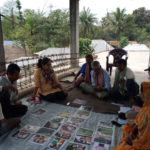
Being native of the EGP region, I deeply internalise the constraints and potential of small farmers. Especially the women who are changing the existing gender norms to participate in agriculture. My study will further benefit such smallholder women farmers in terms of their bargaining power to sustain in the competitive value chain and establish food security.
The goal is to To strengthening agriculture for marginal and Tenant Farmers in Eastern Gangetic Plains. Continue reading.
Preharvest and postharvest handling practices of flowers in Myanmar
 I accomplished my Master of Horticultural Science from YAU in 2011 with the thesis title on, “Preharvest and postharvest handling practices of some cut flowers in selected area of Myanmar”. In my country, flowers are widely utilized mainly for religious purpose to offer the Buddha. Recently, the floral decorations have gained popularity and consequently, the demand for cut flowers has been increasing in Myanmar. As cut flowers are perishable and limited in shelf life, there is approximately 23 – 48% of postharvest loss in Myanmar. Both production of high quality flowers and proper postharvest handling of flowers are important to have quality and prolong fresh life of cut flowers. Continue reading.
I accomplished my Master of Horticultural Science from YAU in 2011 with the thesis title on, “Preharvest and postharvest handling practices of some cut flowers in selected area of Myanmar”. In my country, flowers are widely utilized mainly for religious purpose to offer the Buddha. Recently, the floral decorations have gained popularity and consequently, the demand for cut flowers has been increasing in Myanmar. As cut flowers are perishable and limited in shelf life, there is approximately 23 – 48% of postharvest loss in Myanmar. Both production of high quality flowers and proper postharvest handling of flowers are important to have quality and prolong fresh life of cut flowers. Continue reading.
Genetic and agronomic zinc biofortification of sweetcorn
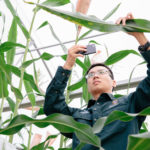 Approximately 30% of the world’s population are zinc-deficient, affecting more than half of the children, elderly and pregnant women in developing countries. If severe it causes stunted growth, poor immunity and retarded mental development, and is ranked as the 5th leading factor of diseases in the developing world. In developed nations, people with Zn deficiency may have quicker progression of age-related macular degeneration (AMD) symptoms. About 10% of Australians aged 55 or older are victims of this disease. A recent project had successfully increased zeaxanthin concentration, another compound for AMD symptom alleviation, in sweet-corn by 10 times. Thus this is a carry-on project to enhance the nutritional value of sweet-corn. Continue reading.
Approximately 30% of the world’s population are zinc-deficient, affecting more than half of the children, elderly and pregnant women in developing countries. If severe it causes stunted growth, poor immunity and retarded mental development, and is ranked as the 5th leading factor of diseases in the developing world. In developed nations, people with Zn deficiency may have quicker progression of age-related macular degeneration (AMD) symptoms. About 10% of Australians aged 55 or older are victims of this disease. A recent project had successfully increased zeaxanthin concentration, another compound for AMD symptom alleviation, in sweet-corn by 10 times. Thus this is a carry-on project to enhance the nutritional value of sweet-corn. Continue reading.
Micropropagation is the future of clonal propagation of avocado
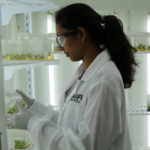 ‘Say it is avocado if want to be popular’. Avocado is a high demand, high value tropical fruit recognised for its nutritional value. In fact, it has all main food elements, many vitamins, minerals and good fat. But, the potential of avocado to be a perfect nutrition supplement is restricted by its price. Why are they so expensive? It relates to short supply for high demand, being a seasonal crop. More and more orchards are essential to serve the exponential demand around the globe and the limitations narrow down to slow plant propagation. Continue reading.
‘Say it is avocado if want to be popular’. Avocado is a high demand, high value tropical fruit recognised for its nutritional value. In fact, it has all main food elements, many vitamins, minerals and good fat. But, the potential of avocado to be a perfect nutrition supplement is restricted by its price. Why are they so expensive? It relates to short supply for high demand, being a seasonal crop. More and more orchards are essential to serve the exponential demand around the globe and the limitations narrow down to slow plant propagation. Continue reading.
Improving coconut cloning technology
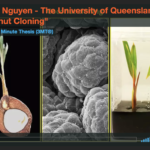 Quang’s recent findings in improvement of coconut cloning technology have made it more reproducible and feasible on a larger scale. He has successfully developed a cloning protocol for a wide range of coconut varieties, including elite types. The cloning technology is the? ‘core’ of his innovative project. He is focusing on perfecting and scaling up this system, bypassing the traditional seed-based coconut farming. The technology hopes to provide low-income coconut planters with affordable and reliable planting materials, harnessing the unused land resources in coconut genetic diversity. Continue reading.
Quang’s recent findings in improvement of coconut cloning technology have made it more reproducible and feasible on a larger scale. He has successfully developed a cloning protocol for a wide range of coconut varieties, including elite types. The cloning technology is the? ‘core’ of his innovative project. He is focusing on perfecting and scaling up this system, bypassing the traditional seed-based coconut farming. The technology hopes to provide low-income coconut planters with affordable and reliable planting materials, harnessing the unused land resources in coconut genetic diversity. Continue reading.
Sea cucumber research advancing hatchery production using neurohormones to stimulate spawning
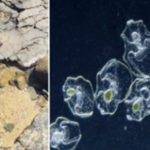 Sea cucumbers are commercially important species due to their value in medicine and food. They have been used as a treatment of gastritis and stomach ulcers, anemia, nervous breakdown, lack of libido in men and backache, amongst other things. Due to overexploitation of sea cucumbers, natural resources have decreased rapidly, thus, artificial breeding has been implemented in some countries to produce high quality juveniles for their aquaculture, stock enhancement and sea ranching. Continue reading.
Sea cucumbers are commercially important species due to their value in medicine and food. They have been used as a treatment of gastritis and stomach ulcers, anemia, nervous breakdown, lack of libido in men and backache, amongst other things. Due to overexploitation of sea cucumbers, natural resources have decreased rapidly, thus, artificial breeding has been implemented in some countries to produce high quality juveniles for their aquaculture, stock enhancement and sea ranching. Continue reading.
Prospects of utilizing wild germplasm for future improvement of macadamia
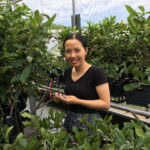
Macadamia is an iconic Australian genus, being the only international crop domesticated from Australian flora, the macadamia nut is widely recognised as the world’s premium nut. There are four known macadamia species, but only two of them (Macadamia integrifolia and M. tetraphylla) are used to produce commercial crop for their edible nuts while two other relatives (M. ternifolia and M. jansenii) has inedible nuts due to containing high levels of cyanogenic glucoside. The genetic improvement program of macadamia mainly utilized only a narrow genetic pool of M. integrifolia and M. tetraphylla. Continue reading.




